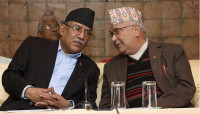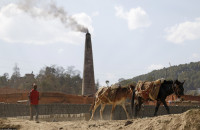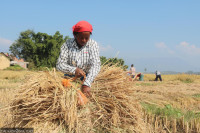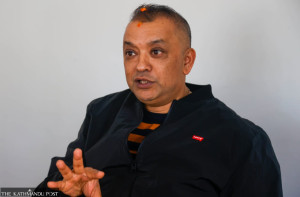Opinion
President’s precedent
The new head of the state should give continuity to her predecessor’s nature conservation efforts
Navin Singh Khadka
One of the first public positions President elect Bidhya Devi Bhandari held in the early 90s was that of an environment minister. Her role in effectively running the ministry back then, however, is debatable. More importantly, the portfolio was newly created in Nepal’s state administration and the position was least sought after by politicians. It still remains so in the political landscape, although increasing number of bureaucrats are said to be interested in the ministry given its importance in the changing climate context.
The environmental issue
Climatic changes may have elevated the relevance of the Environment Ministry in recent years, mainly in terms of its participation in global climate negotiations. But, when it comes to dealing with actual environmental issues the country is faced with, there are many gaps.
That may have been one of the reasons why the immediate past President Ram Baran Yadav launched the Chure-Bhawar conservation programme. Amid the tumultuous political journey the country has had to undergo in the meantime, he may not have been so successful in implementing it. But at least, the issue of the uncontrolled plundering of the natural resources in the Chure Bhawar region did win some recognition. Some studies were conducted and there was remarkable media coverage though one struggles to remember any real environment-related report brought out by the government agencies. Of course, foreign donors have produced many such documents and projects.
All these suggest that environmental works are yet to become the mainstream affairs of the state. And this is the gap the ceremonial role of the president can fill. This is certainly not asking the president’s office to interfere in the government’s business or overstep its ‘authority.’ But environment could defintely use the good offices of the president and be a safe area for it to work on, particularly as environmental issues have almost become nobody’s baby.
It does not have to be an executive role. Advocacy will largely do the job. The trick will be to keep environmental affairs in public discussion—whether by pursuing certain schemes or by sensitising issues. One way to begin could be by continuing what Bidhya Bhandari’s predecessor did for the conservation of Chure Bhawar. She can quickly update herself on where it has reached and take it from there.
Somewhere to start
The Chure Bhawar region is already experiencing an ecosystem collapse given the uncontrolled sand, pebble and boulder mining and also rampant deforestation. The ongoing fuel crisis is said to have aggravated the situation. Of course, it would not be practical to expect the president to talk about conservation of forest and other natural resources just when people have no fuel to cook food. The flourishing briquette business, for instance, is directly dependent on forest resources. And if the fuel crisis persists, people will cut down the trees from the same forests they have been protecting all these years.
But sooner or later, the fuel crisis will be over. Then the need to conserve forest resources will be even more crucial because of the human impacts caused by the current fuel crisis. The good news is that there have been detailed studies about what the environmental problems are and some solutions have been recommended. A quick assessment of the ecological losses in the wake of the fuel crisis would be really helpful.
There have been some controversies surrounding the Chure Bhawar conservation initiatives. One of them is the fear within the community forest stakeholders that the forests they conserved all these years will be taken over by the government and they will be deprived of the resources.
This is something the government will have to address. The fact remains that Nepal’s world renowned community forests would not have been possible without the people living in and around these forests. What happened to the government-owned forests over the years is an open secret. This is not to give a clean chit to all the community forest user groups. Some have been found to be working hands in gloves with illegal loggers. But this fact cannot be used to discredit the entire community of foresters across the country.
With the help of the communities, Chure Bhawar region can certainly be conserved. Once done, this is something the president’s office can showcase to pursue other environmental issues. The success can also be something the president and the government can proudly share with India. The ecological safety of the two Indian states, Bihar and Uttar Pradesh largely depends on how secured the Chure-Bhawar region in Nepal is. It is this natural resource that regulates the thousands of rivers and rivulets that gush into the Ganges flowing through the two Indian states. Their benefits could be felt as far as Bangladesh where the Ganges empties into the sea.
The president’s office does not have a job cut out for itself. But it can take up a regionally rewarding one if it wishes to.
Khadka is a BBC journalist based in London




 12.12°C Kathmandu
12.12°C Kathmandu










